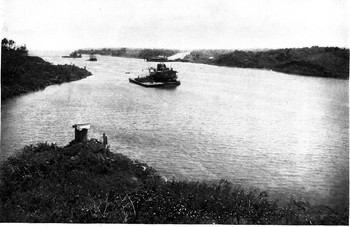
More on This Subject • How a Ship Passes Through the Canal The Canal was built primarily to make a faster way to the West Coast for American settlers in the 19th Century. It was France, however, that first started building on the Isthmus of Panama, in 1881. Ferdinand de Lesseps, who had built the Suez Canal just 12 years earlier, was granted permission to start building in Panama but found the conditions deplorable and ended his stake after eight years and little work done. Another Frenchman took over the company but did little with the rights, then sold them to the United States in 1902. Since the land at the time was owned by Colombia, the U.S. also signed a treaty with that country, the Hay-Herran Treaty. The trouble was that Colombia didn't sign the treaty, fearing that they would lose control of the land. That is exactly what happened the following year, as the drive for Panamanian independence began. The U.S. helped by sending a warship and making sure that Colombia couldn't use American trains to expunge the rebellion. On November 18, 1903, a mere two weeks after the rebellion began, the U.S. and the newly minted Republic of Panama signed the Hay-Bunau-Varilla Treaty, which gave America exclusive and permanent possession of the Panama Canal Zone. Panama got $10 million and an annual payment of $250,000.
|
|
Social Studies for Kids
copyright 2002–2025
David White

 Three years later, backed by the encouragement of President Teddy Roosevelt, the Canal construction began. It was back-breaking, deadly work, as foreign diseases killed hundreds of workers. But the 40-mile-long canal was completed after five long years of construction. The cost: $400 million.
Three years later, backed by the encouragement of President Teddy Roosevelt, the Canal construction began. It was back-breaking, deadly work, as foreign diseases killed hundreds of workers. But the 40-mile-long canal was completed after five long years of construction. The cost: $400 million. 
